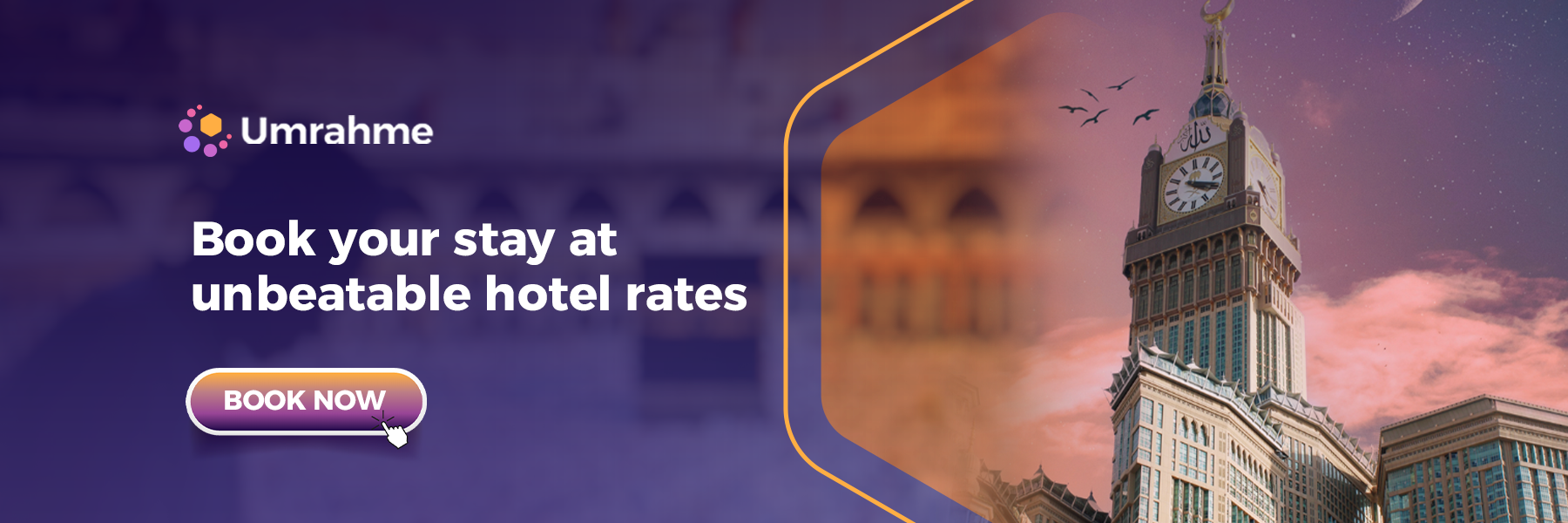UNESCO World Heritage Sites in Saudi Arabia
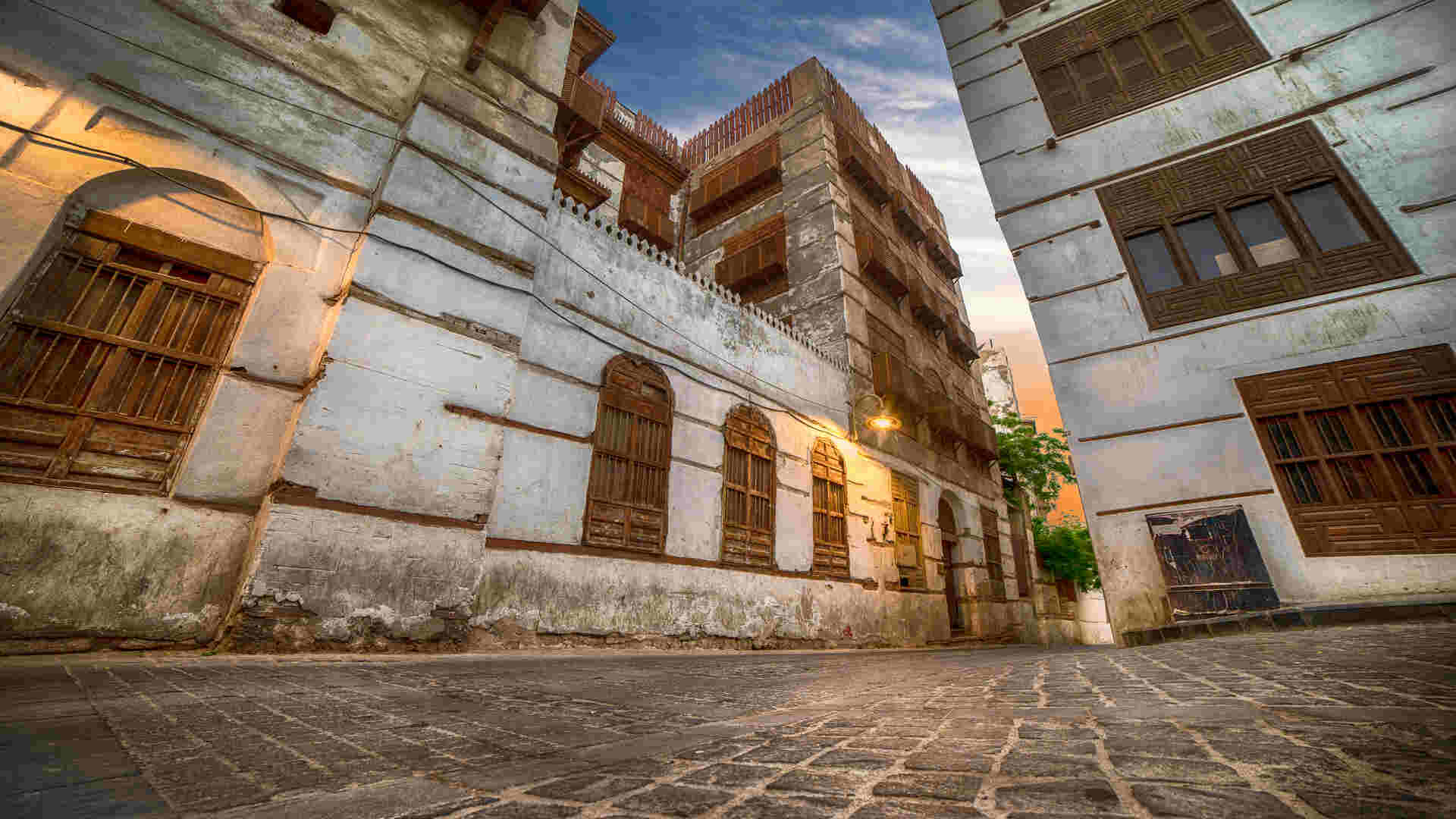
Grab your passport and get ready for an adventure! From cities masterfully carved out of rocks to lush oases emerging amidst vast deserts, Saudi Arabia is a canvas of UNESCO marvels waiting for you. Here are 6 UNESCO sites to add to your bucket list:
1. Hegra Archaeological Site (al-Hijr / Mada’in Ṣāliḥ) (2008)

Known as Saudi Arabia’s first UNESCO World Heritage Site, Hegra is located less than 22 km from AlUla, an ancient city that’s a testimony to the Nabataean civilization. It is also known as ‘Mada’in Saleh’. The site is also referred to “Al-Hijr Archaeological Site”.
Having a resemblance to the Petra site in Jordan, this archeological gem gives visitors a good indication of how the people of Nabatean civilization lived back then. A number of ancient burial sites can be found along these cliffs, illustrating the rich history of this city.
Embark on an adventure at Hegra. Walk through the stone city to explore the awe-inspiring architecture, 110 preserved tombs, walled carvings, decorated facades, and ancient agricultural wells.
- Location: Nestled in the sandy landscapes of AlUla in Northern Hejaz.
- Getting to Hegra (Mada’in Salih):
- By air – AlUla is easily accessible through AlUla International Airport with international airlines including Flydubai and national carriers such as Saudia Airlines and Fly Nas providing regular flights.
- By road – It’s a 4-hour drive from Madinah. Rental cars and taxis are readily available to book.
- Entrance fee: SAR 95 (Prices may vary)
- Famous for: Rock cut monumental tombs showcasing Nabatean craftsmanship.
- Nearby places to explore: AlUla Old Town, Elephant Rock, Jabal Al Ahmar, Tomb of Lihyan son of Kuza, Jabal Al Banat, Jabal Ithlib, and the Handcraft Pavilion
- Best time to visit: November through March
- Insider tips:
- If you’re visiting Hegra by road, free parking is available at the Winter Park.
- Don’t miss the unique exhibit of Hinat, at the Hegra Exhibition Center. Learn the story of the ancient Nabataean woman who lived 2,000 years ago, and whose tomb was excavated in 2008.
- Explore the icon of Hegra – Tomb of Lihyan Son of Kuza, the largest and most stunning site in Hegra.
- We recommend booking a Rawi (trained guide) for deeper insights into the history and stories behind the monuments.
- This trip would take about 2-3 hours of exploration.
- Traveler tips:
- Respect the sanctity of the place
- Dress in modest clothing
- Wear sun protection and comfortable shoes to ease your journey
- Carry sufficient water
2. At-Turaif District in ad-Dir’iyah (2010)
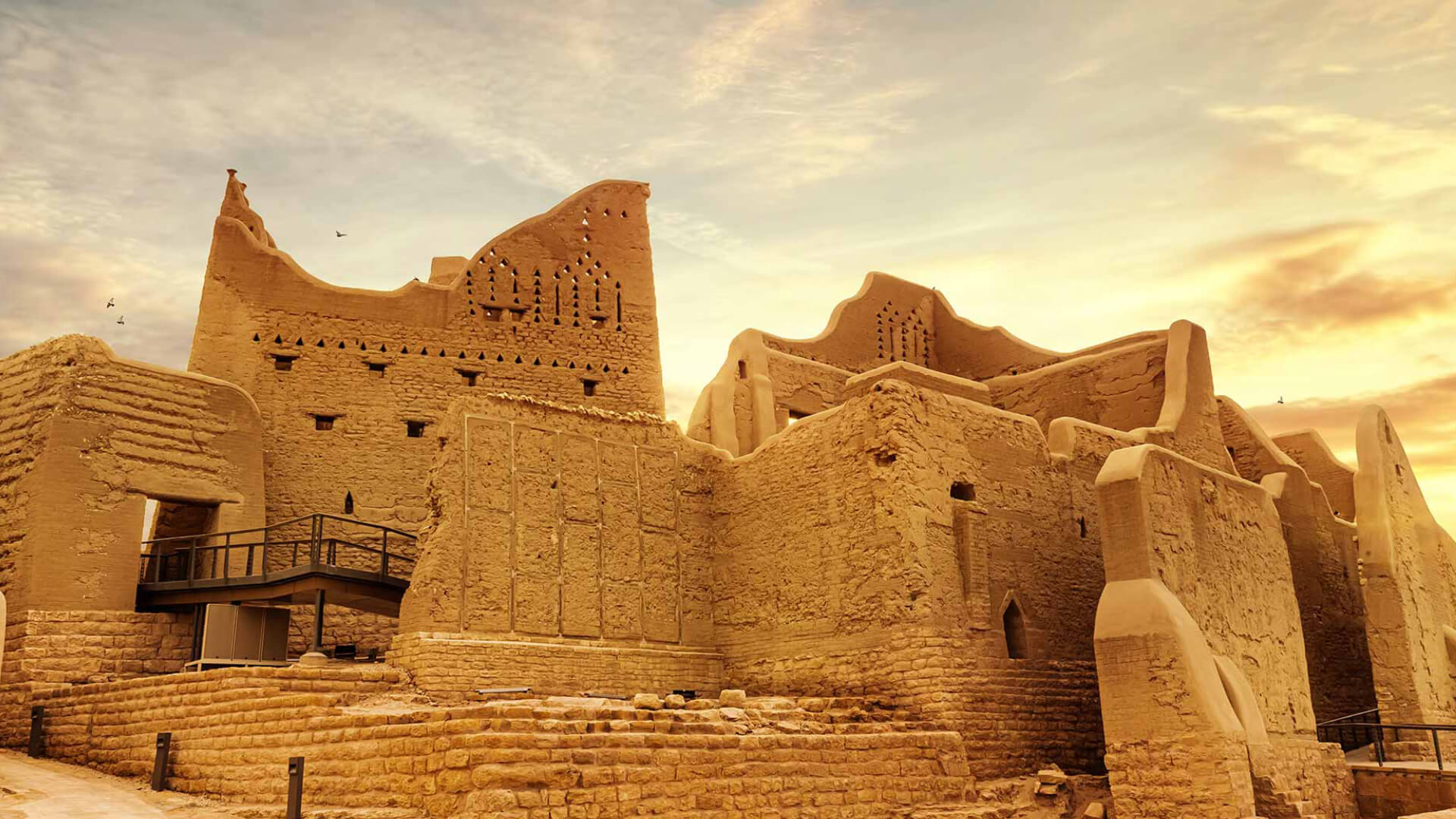
At-Turaif District in ad-Dir’iyah, another UNESCO World Heritage Site, is an archaeological jewel dating back to the 15th century. Here, guests can explore the roots of Saudi culture, going back to when Diriyah served as the capital of the first Saudi state and was a popular trading spot in the Arabian Peninsula. Every corner of the district offers a glimpse into the country’s momentous past.
- Location: At-Turaif is situated on the northwestern outskirts of Riyadh, the Saudi capital.
- Getting to At-Turaif: At-Turaif is conveniently located just 36 minutes away by car from the heart of Riyadh. The city is serviced by King Khalid International Airport, which offers a range of both international and domestic flights. You can then book local taxis, Uber, and Careem to reach the site.
- Entrance fee: Entry is free, however, a few museums may charge a nominal fee.
- Famous for: Its main attraction, Salwa Palace, which was founded in 1765 AD. It is an imposing landmark that served as the royal residence for the kingdom’s monarchs. The district is also famous for its traditional Najdi architecture.
- Nearby places to explore: You can visit the vibrant city of Riyadh and explore attractions such as the National Museum, King Abdulaziz Historical Center, and Souk Al Zal.
- Best time to visit: October and April
3. Hima Cultural Area
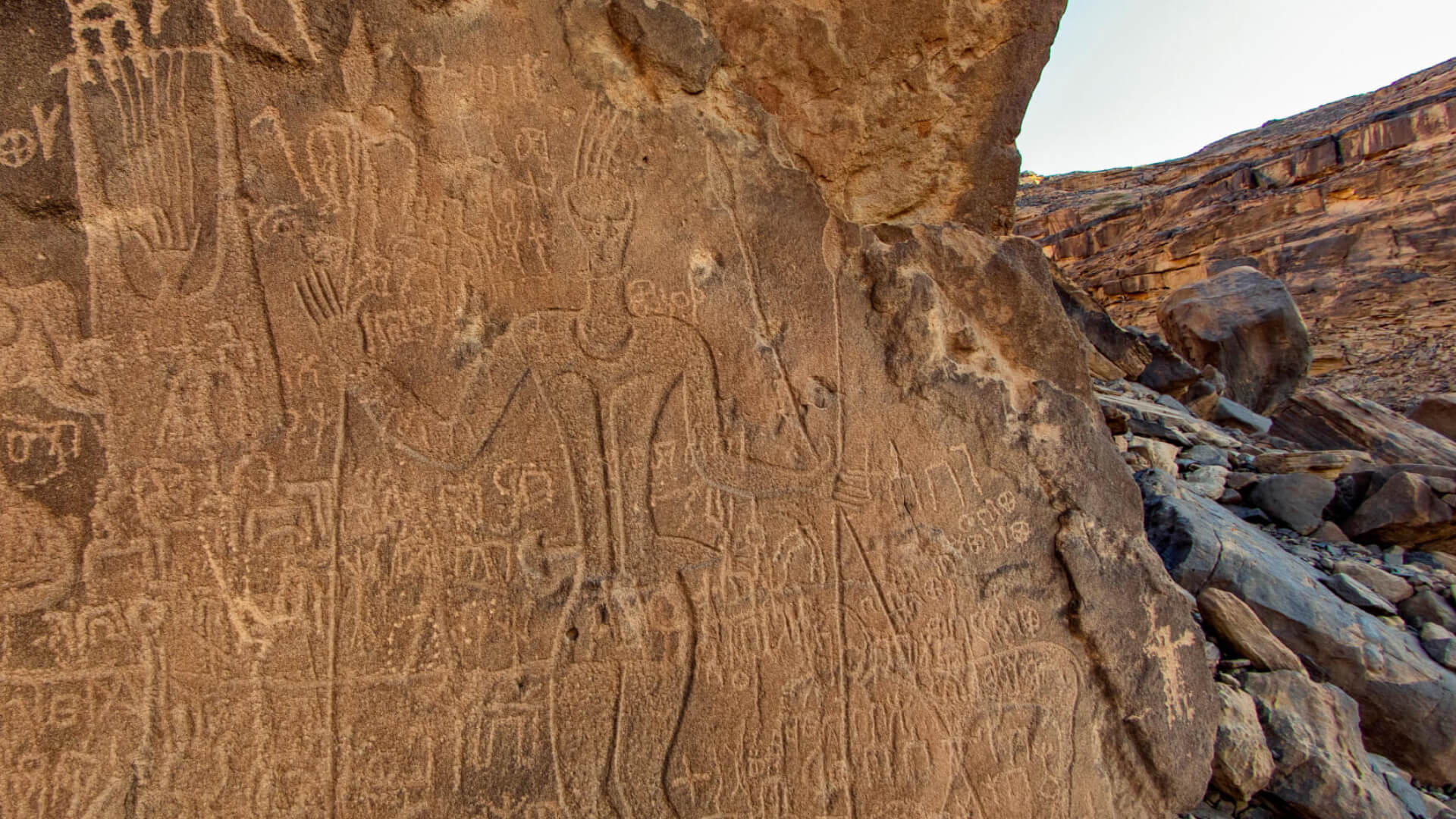
Nestled in the southern province of Saudi Arabia, the ancient site of Hima, also known as “Bir Hima” invites adventurers and history enthusiasts alike. This rock art site—bursting with time-honored etchings that immortalize hunts, indigenous wildlife, flora, and snapshots of ancient lifestyles—is a destination not to be missed.
Graced with the prestigious UNESCO World Heritage Site title in 2021, Hima serves as an open-air museum boasting an exceptional array of petroglyphs and inscriptions. The rock art, with some pieces tracing back over 7,000 years, captures the essence of environmental evolution across the ages.
As you embark on this journey today, Hima unfolds as an archaeological gem offering an immersive plunge into human history. It presents a captivating conversation between the past and the present, presenting a once-in-a-lifetime chance to look back at the heritage left behind by the region’s earliest settlers.
- Location: Najran province, Southwest Saudi Arabia
- Getting to Hima Cultural Area: Flights are available from Riyadh/Jeddah to Najran, the nearest city to Hima, which takes about 1.5 to 2 hours. From Najran, you can hire a car or use a local guide service to reach Hima, which is approximately a 2-hour drive.
- Entrance fee: Entry to the site is free although local guide fees might apply.
- Insider tips:
- Early mornings and late afternoons are the best times to visit for the optimum light on the petroglyphs.
- Look out for the ancient wells
- Traveler tips:
- An ideal destination for history buffs
- Dress modestly, respecting local customs
- Carry a hat, sunscreen, water, and snacks as amenities in the area are minimal
- Hire a local guide to reach the site as this is a remote location
- Best time to visit: Cooler months from November to March offer the most comfortable climate for exploration.
4. Al Ahsa Oasis
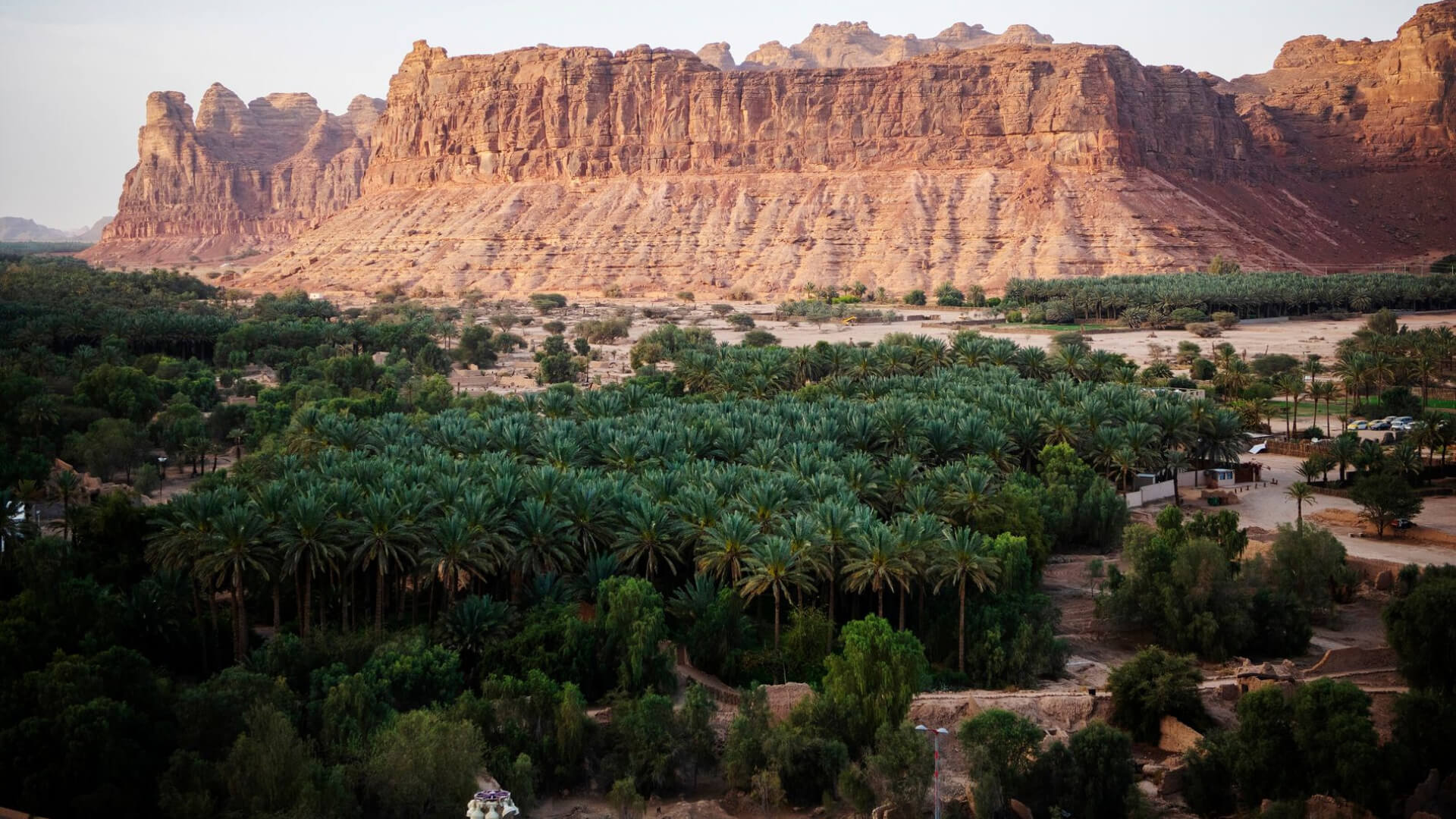
Discover the tranquil beauty of Al-Ahsa Oasis, the largest palm oasis in the world, nestled in Saudi Arabia’s eastern Arabian Peninsula. This UNESCO World Heritage Site paints the perfect picture of lush greenery amidst the golden desert, offering a captivating mix of history, culture, and nature.
Known for its millions of date palms, historical structures, enchanting gardens, and refreshing springs, Al-Ahsa breaks the stereotype of arid desert landscapes.
What makes Al-Ahsa unique as the world’s largest oasis? It encompasses 12 distinct areas—each unraveling a story of human settlement dating back to the Neolithic period. This widespread oasis thrives with its 2.5 million thriving date palms, showcasing the prosperous agricultural practices of the region.
See it to believe it—a trip to Al-Ahsa Oasis promises a journey through time and agricultural wonder right in the heart of Saudi Arabia’s desert.
- Location: Al-Ahsa Oasis is located on the eastern side of Saudi Arabia, approx. 2.5-hour drive from Dammam.
- Getting to Al-Ahsa: The area is accessible by road with car rentals or taxis from major cities like Riyadh and Dammam. Nearby airports include the Al-Ahsa International Airport, about 35 km away, providing additional options for international visitors.
- Entrance fee: Entry to the oasis is free, but fees may apply for certain attractions within the area.
- Nearby places to explore: There are several attractions located in and around the Oases to explore, adding colorful shots to your Instagram feed.
- Insider tips:
- Make sure to visit the Jawatha Mosque, the oldest mosque in East Arabia
- Don’t miss Ibrahim Palace for glimpses into the region’s history.
- Try local dates freshly harvested from the oasis trees.
- Explore the Judas Cave in the Qara mountains
- Relax at the serene Al Afsar Lake and bask in nature.
- Traveler tips:
- Light, breathable clothing is recommended due to the warm climate.
- Remember to bring bottled water and sunscreen.
- As this is a conservative region, respect local customs and attire.
- Best time to visit: From November to March when the weather is milder and more conducive for outdoor activities.
5. Rock art in the Hail region of Saudi Arabia
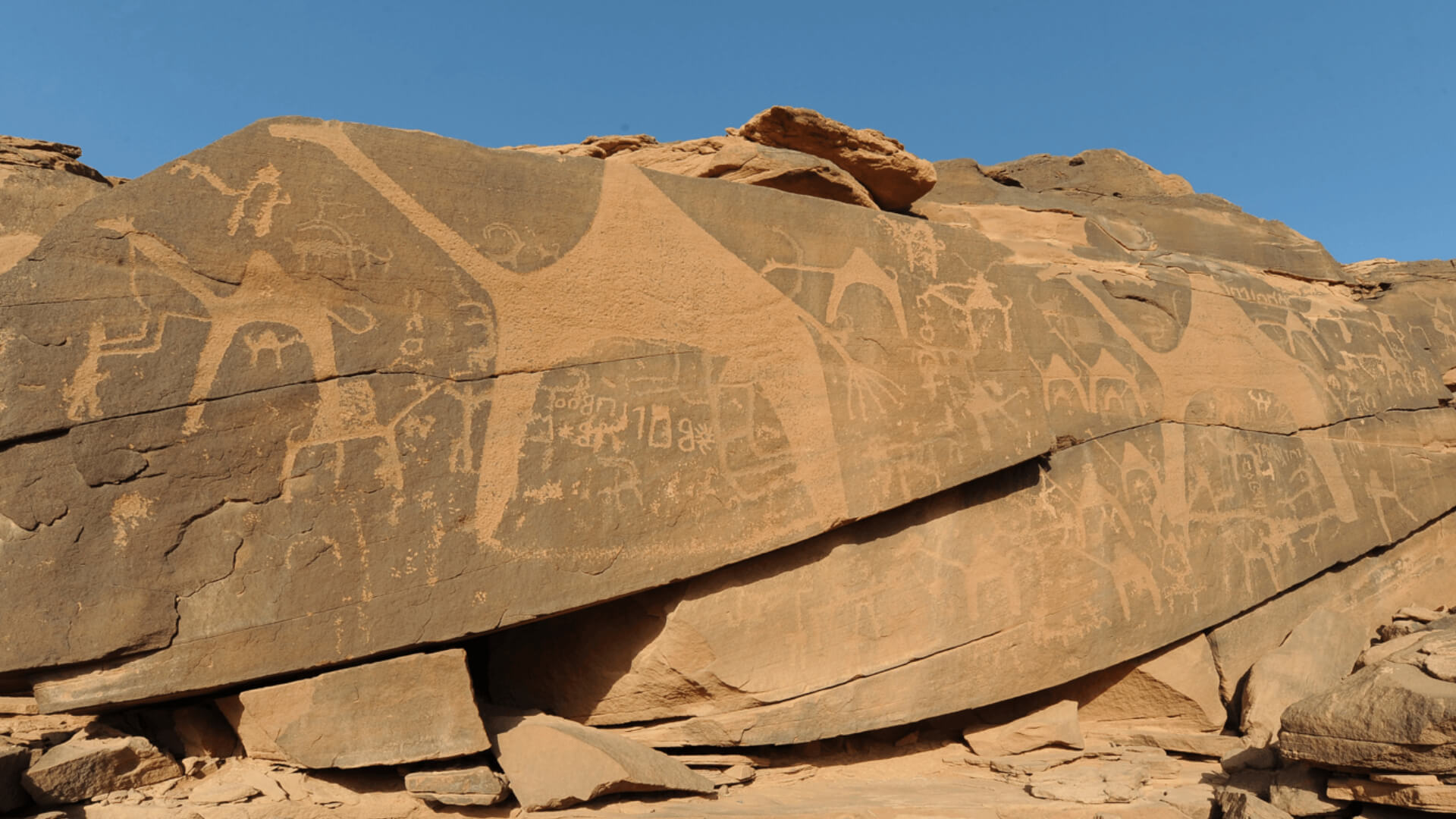
If you’re crazy about history, then don’t miss a visit to the Rock Art in the Hail Region of Saudi Arabia. These breathtaking sites, with artistic inscriptions dating back to 10,000 years, are a testament to the age-old traditions and cultures. Humans and animals come alive in these petroglyphs, brilliantly preserved for present-day explorers.
The two prime locations housing these artistic treasures are Jabal Umm Sinman in Jubbah and Jabal al-Manjor in Shuwaymis. Known for their accessibility and magnificence, visitors can indulge in a self-guided tour or seek the wisdom of an expert guide. In essence, the Hail Rock Art offers an invaluable window into Saudi’s intriguing past.
- Location: Hail region, Saudi Arabia
- Getting to Hail: With its own airport, reaching Hail is a breeze. Numerous flights connect Hail to major cities in and around Saudi Arabia.
- Famous for: Ancient rock art of Jabal Umm Sinman in Jubbah and the thrilling adventures at the Al Nafud Desert.
- Nearby places to explore:
- Explore A’arif Fort, a significant historical landmark renowned for its intriguing past.
- Discover unique artifacts at the Hail Heritage Museum, a treasure trove of local culture and history.
- Marvel at the Barzan Palace, a symbol of Hail’s architectural grandeur and history.
- Entrance fee: Most sites in Hail, including the rock art sites, are accessible free of charge.
- Insider tips:
- Making the most of your trip to Hail might mean timing it with the annual Desert Festival in spring or during the
- Hail International Rally
- Consider availing of guided tours for an immersive experience.
- Look out for the local souqs to buy traditional crafts unique to Saudi Arabia.
- Traveler tips:
- Pack light but include essentials for desert excursions like sunscreen and hats.
- Always respect local customs.
- Best time to visit: The ideal time to visit Hail is in the cooler months of November to March when you can fully enjoy outdoor activities and festivals.
6. Historic Jeddah

Uncover the Historic past of Jeddah, a district that beautifully captures the evolution of the city through the centuries. Admire the iconic coral stone houses with their intricate wooden balconies—a true testament to the unique architectural style of the Red Sea region.
Revel in the vibrant atmosphere of Al-Balad, Historic Jeddah’s heart, characterized by its bustling markets and historical buildings. When the sun goes down, the old souqs light up, buzzing with life and activity. It’s an atmosphere reminiscent of the scene from the cartoon Aladdin. Wander through the maze-like alleyways and cobbled streets that provide a picture-perfect shot for your Instagram feed.
These experiences in Historic Jeddah provide you with a unique opportunity to journey through Saudi Arabia’s rich cultural and architectural history.
- Location: Nestled on the coast of the Red Sea, it’s the heart of Saudi Arabia’s second-largest city, Jeddah.
- Getting to Jeddah: Jeddah’s main airport, King Abdulaziz International Airport, is well-connected with international and domestic flights. You can either rent a car, book through Uber or Careem, or hop on to one of their SAPTCO buses to reach the city center.
- Famous for: Red Sea-inspired architecture, winding lanes, vibrant night souqs, and rich history
- Nearby places to explore: King Fahd Fountain, Red Sea Mall, Jeddah Corniche, Fakieh Aquarium, and Floating Mosque.
- Entrance fee: Free
- Insider tips:
- Don’t miss exploring the Alleys at night—they’re a shopper’s and photographer’s delight.
- Try local delicacies at the street-side cafes for an authentic cultural experience.
- If you’re after bargains, you will love the souqs.
- Traveler tips:
- Wear comfortable shoes for walking.
- Follow local dress codes as a mark of respect for the culture.
- Best time to visit: The weather is pleasant from October to March.
Exploring Saudi Arabia’s UNESCO sites, such as Al-Hijr, At-Turaif, and the Hail Region, is a journey through time. These sites provide a unique glimpse into ancient human civilizations and the evolution of life in the Middle East region.
By visiting these cultural and natural treasures, travelers broaden their historical understanding and build a connection with the past. So, if you’re a history enthusiast, an adventurer, or just a curious traveler, the cultural treasures of Saudi Arabia’s UNESCO sites await your discovery. Check out Umrah+Holidays for the best travel packages in Jeddah. If you’re looking to explore the city by yourself and need help with hotels, head over to our website and book from over 90 best hotels in Jeddah.


